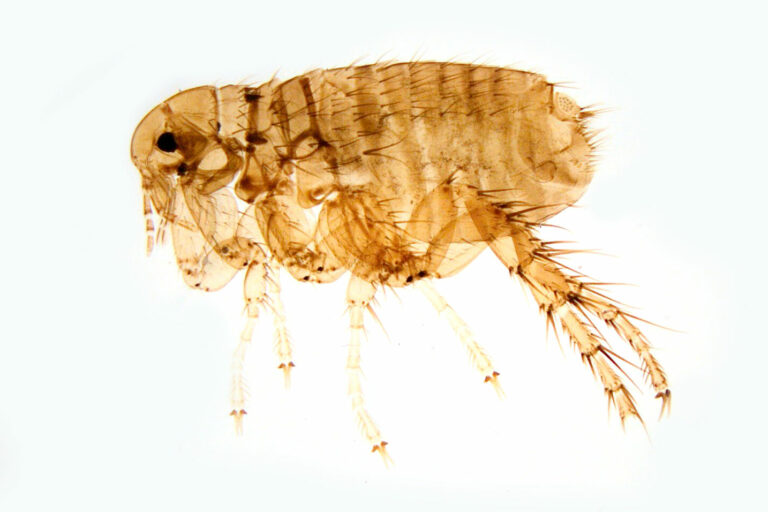Archaeopsylla erinacei

HEDGEHOG – FOX – DOG – CAT – HUMAN
Archaeopsylla erinacei is a flea that primarily parasitizes hedgehogs, hence its common name, the hedgehog flea. However, it can also infest other mammals, including humans. It is widespread in the Palearctic region, which includes Europe, Asia, and North Africa. The hedgehog flea reaches a body length of 2 mm to 3.5 mm (Brinck-Lindroth & Smit 2007). Adult fleas feed on the blood of their host (Sgonina 1935). The life cycle of fleas, from egg to three larval stages, a pupal stage, and then to the adult form, can be completed within two weeks. However, under unfavorable conditions, it can extend over several months (Beck & Prosl 2010).
Human pathogenicity: When humans are accidentally infested, flea bites can cause changes in the human skin at the sites of puncture. Fleas often bite at multiple locations, leading to intense itching. Additionally, fleas can transmit a variety of pathogens through their blood-feeding activities (Beck & Prosl 2010).
-
Beck, W; Prosl H (2010)Humanpathogene Flöhe (Siphonaptera) von Tieren und aus der Natur–Zoonose-Erreger des Menschen in Mitteleuropa. In: Denisia, n° 0030.
-
Brinck-Lindroth, G; Smit, FG (2007)The fleas (Siphonaptera) of Fennoscandia and Denmark. Leiden, Boston : BRILL (Fauna entomologica Scandinavica, v. 41).
-
Sgonina, K (1935)Die Reizphysiologie des Igelflohes (Archaeopsylla erinacei Bouché) und seiner Larve. In: Zeitschrift für Parasitenkunde, vol. 7, n° 5, p. 539–571.